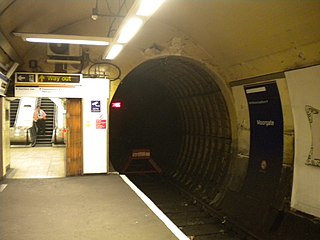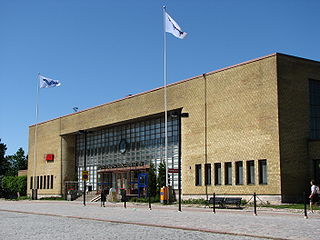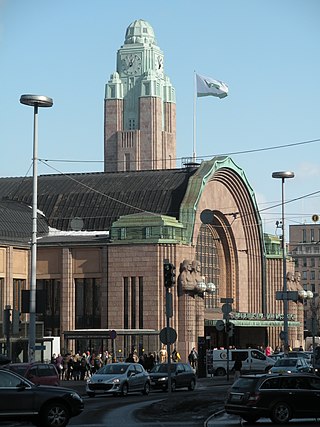
Helsinki is the capital, largest and most populous city in Finland. Located on the shore of the Gulf of Finland, it is the seat of the Uusimaa region in southern Finland. Approximately 0.67 million people live in the municipality, with 1.25 million in the capital region, and 1.64 million in the metropolitan area. The region is by far the most populous urban area in Finland and the country's most important centre for politics, education, finance, culture and research. Helsinki is located 80 kilometres (50 mi) north of Tallinn, Estonia, 362 km north of Riga, Latvia 400 km (250 mi) east of Stockholm, Sweden, and 300 km (190 mi) west of Saint Petersburg, Russia. It has close historical links with these four cities.
Helsingin Sanomat, abbreviated HS and colloquially known as Hesari, is the largest subscription newspaper in Finland and the Nordic countries, owned by Sanoma. Except after certain holidays, it is published daily. Its name derives from that of the Finnish capital, Helsinki, where it is published. It is considered a newspaper of record for Finland.

The Helsinki Metro is a rapid transit system serving Greater Helsinki, Finland. It is the world's northernmost metro system. It was opened to the general public on 2 August 1982 after 27 years of planning. It is operated by Helsinki City Transport and Metropolitan Area Transport Ltd for Helsinki Regional Transport Authority and carries 92.6 million passengers per year.

The Moorgate tube crash occurred on 28 February 1975 at 8:46 am on the London Underground's Northern City Line; 43 people died and 74 were injured after a train failed to stop at the line's southern terminus, Moorgate station, and crashed into its end wall. It is considered the worst peacetime accident on the London Underground. No fault was found with the train, and the inquiry by the Department of the Environment concluded that the accident was caused by the actions of Leslie Newson, the 56-year-old driver.

A buffer stop, bumper, bumping post, bumper block or stopblock (US), is a device to prevent railway vehicles from going past the end of a physical section of track.

Turku Central Station is a railway station in the VII District of Turku, Finland. It has VR services to Helsinki and towards Joensuu. The station serves approximately a million passengers annually.

Helsinki Central Station (HEC) is the main station for commuter rail and long-distance trains departing from Helsinki, Finland. The station is used by approximately 400,000 people per day, of whom about 200,000 are passengers. It serves as the terminus for all trains in the Helsinki commuter rail network, as well as for all Helsinki-bound long-distance trains in Finland. The Rautatientori metro station is located in the same building.

Pasila station is a railway station in Helsinki, Finland, approximately 3.5 kilometres (2.2 mi) north of Helsinki Central. It is the second busiest railway station in Finland, after Helsinki Central, and takes up a large part of the district of Pasila. The station was first opened in 1862 along the Finnish Main Line. The current station building opened in 2019.

Pasila is a part of Helsinki, Finland, that is both a central-northern neighbourhood and district, bordering the areas of Alppila to the south, the Central Park (Keskuspuisto) to the west, and Vallila to the east.

Over the latter years of the 19th and early years of the 20th centuries, Penistone in Yorkshire gained a name as an accident black-spot on Britain's railway network; indeed, it could be said to hold the title of the worst accident black-spot in the country. The main line through the town was the Woodhead route of the Manchester, Sheffield and Lincolnshire Railway between Sheffield Victoria and Manchester, London Road. The line was heavily graded with a summit some 400 yards inside the eastern portal of the Woodhead tunnel.

The Gare de Lyon rail accident, occurred on 27 June 1988, when an SNCF commuter train headed inbound to Paris's Gare de Lyon terminal crashed into a stationary outbound train, killing 56 and injuring 57, resulting in the third deadliest rail disaster in peacetime France.

On 8 January 1991, a packed commuter train failed to stop and collided with the buffers at Cannon Street station in London, United Kingdom, killing two and injuring 542. The cause was driver error, compounded by ageing wooden carriages.
There have been a number of train accidents on the railway network of Victoria, Australia. Some of these are listed below.
The railways of New South Wales, Australia have had many incidents and accidents since their formation in 1831. There are close to 1000 names associated with rail-related deaths in NSW on the walls of the Australian Railway Monument in Werris Creek. Those killed were all employees of various NSW railways. The details below include deaths of employees and the general public.

The Sm3 Pendolino is a class of high-speed body-tilting trains operated by VR Group. It is a member of the Pendolino train family; its design is based on the ETR 460. The first two trainsets were assembled in Finland by Rautaruukki-Transtech in the mid-1990s. The rest of the series of eighteen EMUs were built by Fiat Ferroviaria between 2000 and 2006. The trains serve most of Finland's major cities such as Helsinki, Turku, Oulu and Joensuu with a maximum speed of 220 km/h (140 mph), although this speed is only attained between Kerava and Lahti. The train has a power output of 4,000 kW (5,400 hp) and weighs 328 tonnes.

The Helsinki–Tallinn Tunnel is a proposed undersea tunnel that would span the Gulf of Finland and connect the Finnish and Estonian capitals by train. The tunnel's length would depend upon the route taken: the shortest distance across would have a submarine length of 80 kilometres (50 mi), which would make it longer than the current longest railway tunnel in the world, the 57 km Gotthard Base Tunnel. It has been estimated that the tunnel, if constructed, will cost €9–13 billion. It may open in the 2030s. The European Union has approved €3.1 million in funding for feasibility studies. A pre-feasibility study from 2015 proposed a 250 km/h top speed.
The Sjursøya train accident was a railway accident that occurred on 24 March 2010 at around 13:15 local time, when a set of 16 freight cars began to roll uncontrollably during shunting on Alnabru, north in Oslo. The train dispatcher central chose to lead the runaway train in the direction of Sjursøya, along the Loenga–Alnabru Line, where it derailed and rolled through a Statoil building in the terminal area at Sjursøya, a peninsula which is part of the Oslo ports facilities. The line leading to the container and petroleum port at Sjursøya is a branch of Østfold Line, and is only used at low speeds. However, the empty carriages crashed into the harbour terminal at an estimated speed of more than 100 km/h (62 mph). At the most, the set of wagons had a speed of 90–140 km/h.
The Pretoria train accident occurred on 21 April 2010 when a train of carriages ran away for 12 miles (19 km) from Centurion Station and derailed at Pretoria. Three people were killed and seven were seriously injured.

Helsinki City Bikes is a public bicycle system in Helsinki and Espoo and integrating with the rest of the public transport in Helsinki since May 2016. It is operated as a public-private partnership between Helsinki Regional Transport Authority (HSL), Helsinki City Transport (HKL), Espoo Technical and Environment Services, Moventia and Smoove.
On 3 February 2003, a Comeng electric multiple unit train rolled away from Broadmeadows station in Melbourne, Australia, before it ran for nearly 17 kilometres (11 mi) out of control without a driver and eventually crashed into another train about to depart Spencer Street station. Train controllers attempted several times to stop or redirect the train, but were limited in their ability to intervene, instead being forced to alter the route of other trains to avert a more serious collision. Eleven people on board the stationary train were injured; authorities did not know until after the crash if any passengers were on board the runaway. An investigation identified driver error as the cause of the accident, but the runaway event prompted significant debate about the role of government authorities and private operators in ensuring safety and reliability on the Melbourne rail network.















